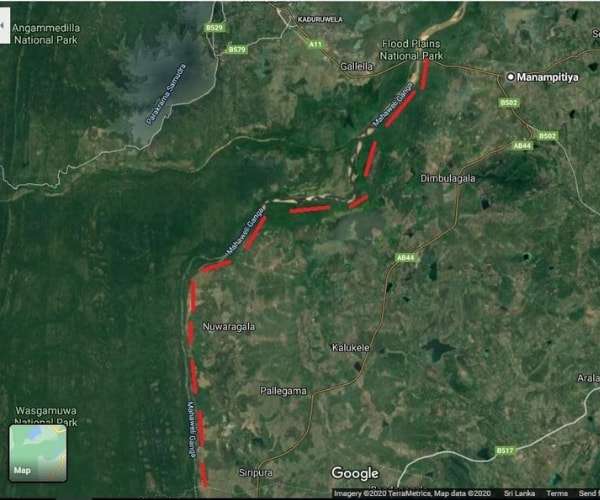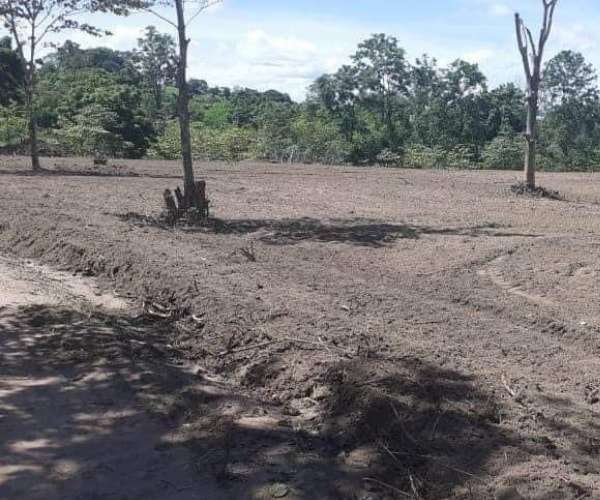
Nov 28 2020.
views 372Ambitious development projects have put the environment to test. Therefore environmentalists are in a constant battle to protect nature. Last week, a landmark judgement was issued on the land clearance that happened at the Kallaru Forest Reserve near Wilpattu National Park. But many other cases lie in the pipeline, awaiting justice in the public interest. Another victory was the expansion of the Sinharaja Forest Reserve through a gazette issued during the previous regime. This week’s Wildlife Watch focuses on the Gazette and two incidents of expediting development projects allegedly without following due process.
Sinharaja Forest Reserve expands
Although Sinharaja Rainforest is considered the ‘lungs of Sri Lanka’ over time most adjacent forests were unprotected. “At the time of the British, Sinharaja was a massive forest that spanned across Galle, Matara, Ratnapura and Kalutara Districts,” opined Jayantha Wijesingha, Convener of Rainforest Protectors Sri Lanka. “Historical records show that elephants would travel through Sinharaja forest towards Samanala Forest Reserve all the way up to Horton Plains towards Wasgamuwa. But in the 1970s, the Sirimavo Bandaranaike administration sold adjacent forest lands for timber. It was during this time that veteran environmentalists such as Iranganie Serasinghe and Kamini Witharana started Ruk Rakaganno and voiced against such moves.”

Image: Proposed road from Manampitiya to Yakkure
“But in 1986, Sinharaja Forest was gazetted as a National Heritage Wilderness area giving due recognition to its biodiversity. The total area was 11,000 hectares. But although it was protected, it was defragmented at the time of the British colonial period to construct roads towards Rakwana, Deniyaya and Kalawana. As a result, most forest patches were isolated and unprotected. There were certain ‘proposed forest reserves’ and many people voiced for the protection and inclusion of these forest patches.”
However the 2014 gazette wasn’t enacted and a tedious technical process had to be followed, referring GPS coordinates and marking boundaries. Forest patches in Hingulana and Diyadawa have to be separately declared while Hingulana has been defragmented towards Godakawela. But during the last government, this was seriously taken up and the Forest Conservation Department prepared a gazette. After following due procedures former President Maithripala Sirisena signed it but this gazette was never published. There were certain concerns and issues in translations. But now that it is out, all the relevant forest patches are now officially protected and annexed to the Sinharaja Forest Reserve. Therefore the total land area now is 36,000 hectares which is fully protected and nobody can do any illegal activities defined in the Flora and Fauna Protection Ordinance.”
Land clearance in Pollebadda - Rambakan Oya
As many as 4000 hectares of land will be cleared in Pollebadda, Rambakan Oya to be given away to maize farmers under the proposed Agriculture and Livestock Development programme. According to the Centre for Environmental Justice (CEJ) around 500 hectares have already been cleared allegedly without a proper environmental monitoring process. As per the National Environmental Act, clearing more than one hectare of land for a commercial purpose requires an Environmental Impact Assessment. But CEJ alleges that the Central Environmental Authority has bypassed the laws and given the go-ahead to the Mahaweli Authority to expedite the project.
However, when contacted an official at the Eastern Province CEA Office said that the Mahaweli Authority has been given a set of guidelines to follow. “The Land was utilised previously for chena cultivations. So they could adjust those areas and utilise for this purpose without damaging the forest patches. It was the contractor that had cleared the area. But we are closely monitoring the operation.”

Image: Land cleared in Pollebadda
According to Mahaweli Authority Director General Sunil S. Perera, the land is gazetted under the Authority. “While giving around 100 acres to local farmers we are planning to give the remainder to investors. The total area is around 3500-4000 acres but we are mostly utilizing previous plots used for chena cultivations. Apart from that we have been given a set of guidelines from CEA and will follow them.”
Road construction through Flood Plains National Park
The Flood Plains National Park situated in the North Central Province is the only wetland in the dry zone. Its network of villus acts like the kidneys, cleaning water before it enters the Mahaweli River. Spanning 17,350 hectares, the Park is the only habitat for elephants that were displaced after the Mahaweli Project was expedited. Over 30% of elephants are found in the Mahaweli region and the Park plays the role of an important habitat. As it lies in a central location between the Wasgamuwa and Somawathiya National Parks, the Flood Plains National Park connects all forest patches together. The area was gazetted as a National Park in 1984 after taking its ecological importance into consideration.
However, a plan is underway to construct a 13km Road from the Manampitiya Bridge via the National Park up to Yakkure. The road is proposed to be built adjacent to the river and will affect the Handapan, Manampitiya and Bandiya Villus. Once the previous road became part of the Flood Plains National Park a new Road was constructed, connecting Manampitiya, Dimbulagala, Palatiyawa, Kalukale, Bandunagala towards Yakkure. Therefore people really don’t need another road to travel. Environmentalists in the area claim that this could be an attempt to encourage sand mining activities along the Mahaweli River.
According to the FFPO the construction of a road or clearing land inside a national park is prohibited.
According to the Wildlife and Nature Protection Society (WNPS) the construction of the road within the floodplain does not make any sense as, during the rainy season, this road will go underwater and will only be navigable during a certain period of the year. “Additionally, the Yakkure Flood Plains is an elephant corridor and an elephant gathering location and the construction of the road will only cause massive disruption to these elephants, from habitat loss, thereby resulting in even more human-elephant conflict (HEC) in the area,” the spokesperson for the Society said. “It is also understood that there are illegal chena farming activities within the nine “Villus” inside the Yakkure national park flood plains and this illegal activity should immediately be halted as it is increasing human-elephant conflict in the area.
“This road construction will also pave the way for illegal sand mining activity and felling of trees inside the Yakkure Flood Plain thereby giving rise to more environmental disasters that will eventually affect the people of the area. Such short sighted decisions should not be encouraged.” WNPS is further of the opinion that these mandated sanctuaries and national parks are protected by the country’s Fauna and Flora Protection Ordinance (FFPO) and such encroachments should not be permitted and the guardians of our wildlife, the Department of Wildlife Conservation given all the support to protect these lands.
When contacted, Minister of Wildlife and Forest Conservation C. B Ratnayake told the Daily Mirror Life that approval will not be given to continue the project.
0 Comments